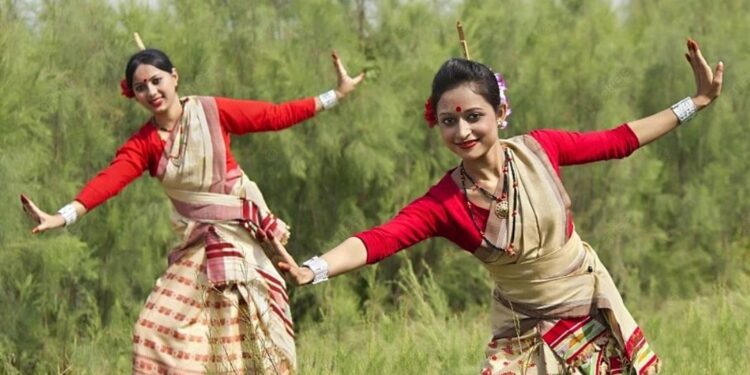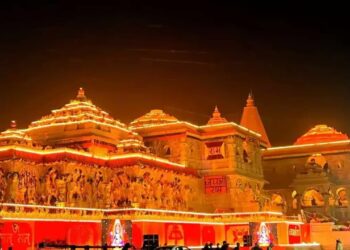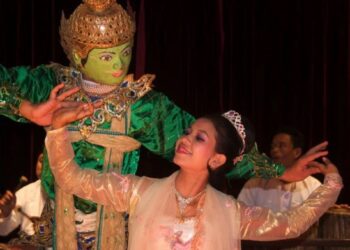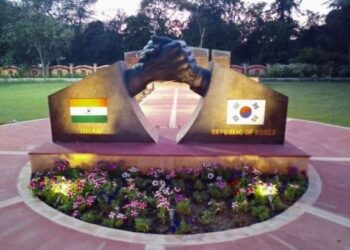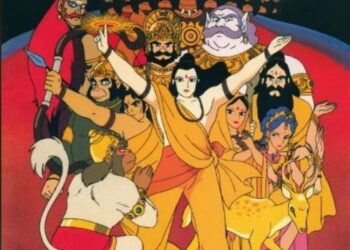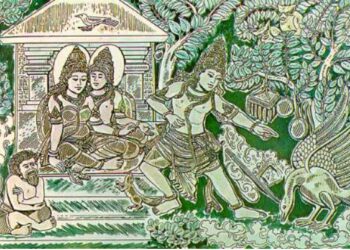Culture is a tapestry woven with a myriad of ideas and components, encompassing language, culinary habits, traditions, knowledge systems, beliefs, and values. It serves as a reflection of a region’s way of life, capturing the essence of its people and their collective identity. In India, the Northeast region stands as a remarkable embodiment of cultural diversity, where hundreds of communities coexist harmoniously, creating a tapestry of traditions and customs that is truly awe-inspiring.
The Northeast region, often referred to as the NER, is renowned for its vibrant cultural heritage and remarkable diversity. Each community within the region contributes its unique customs, rituals, languages, and artistic expressions, forming a rich mosaic of traditions. From the enchanting folk dances of Manipur to the intricate handwoven textiles of Assam, and from the indigenous musical traditions of Nagaland to the exquisite bamboo craftsmanship of Tripura, the cultural tapestry of the Northeast region is as diverse as it is captivating.
However, despite the region’s cultural richness, for almost seven decades following India’s independence, the cultural heritage of the Northeast was largely marginalized and overlooked. This negligence resulted in a sense of isolation and detachment among the people of the region. The unique traditions, languages, and customs that had been passed down through generations were at risk of fading away, as they were not given the recognition and support they deserved.
Since 2014, a remarkable shift has occurred in the relationship between the rest of India and the Northeast region. The sense of alienation that once existed has been replaced with a genuine appreciation and assimilation of the diverse culture that thrives in the Northeast. Prime Minister Narendra Modi’s leadership has brought about a renewed focus on protecting, preserving, and promoting the cultural heritage of the Northeast, elevating it to a position of great importance.
Revitalizing Northeast India’s Cultural Heritage
To achieve this goal, multiple cultural centers have been established across the region. Notably, the North East Zone Cultural Centre (NEZCC) in Dimapur and the Eastern Zonal Cultural Centre (EZCC) in Kolkata stand as pillars of cultural enrichment. These Zonal Cultural Centres (ZCCs) play a pivotal role in organizing various cultural events that showcase the rich tapestry of Northeast India’s heritage. Additionally, the ZCCs actively encourage and support young and talented artists from the region, empowering them to preserve and revitalize folk and tribal art forms.
The Northeastern Council (NEC) has also played a crucial role in supporting and promoting cultural festivals throughout the region. Festivals like the Sangai Festival in Manipur, Behdienkhlam Festival in Meghalaya, and Hornbill Festival in Nagaland receive the backing of the NEC, attracting a diverse audience from all corners of the country. This not only boosts tourism in the region but also strengthens the cultural connections between the Northeast and other parts of India.
Furthermore, an annual campaign called ‘Destination Northeast’ has been launched since 2017 to showcase the rich cultural heritage of the region and attract more tourists. This campaign takes place in different cities across India, offering a platform to highlight the arts, crafts, culinary traditions, and distinct cultural practices of the Northeast.
In addition to the efforts of the cultural centers and festivals, the Zonal Cultural Centers (ZCCs) organize an annual festival called OCTAVE, which serves as a conduit for promoting folk culture and strengthening the bonds between the Northeast states and the rest of India. Through OCTAVE, the cultural vibrancy of the Northeast finds expression and resonance with a wider audience, fostering a deeper understanding and appreciation of the region’s unique traditions.
The collective efforts undertaken by the government, cultural institutions, and festivals have rekindled a sense of pride and celebration of the Northeast’s cultural heritage. The assimilation and appreciation of Northeastern culture have brought about a deeper connection between the region and the rest of the country, fostering a spirit of unity in diversity. As the Northeast continues to share its vibrant hues of local arts and crafts, and its treasure trove of culinary traditions, it enriches the cultural fabric of the entire nation.
Honoring Northeast India’s Freedom Fighters
The government’s commitment to recognizing and paying tribute to the valiant freedom fighters of Northeast India is evident through several significant initiatives. One notable endeavor is the establishment of the Rani Gaidinliu Tribal Freedom Fighter Museum in Luangkao village, Tamenglong district, Manipur. Rani Gaidinliu, a fearless warrior, dedicated her life to liberating her people from the oppressive British rule. The laying of the foundation stone for this museum serves as a testament to her heroic contributions and ensures that her inspiring story is preserved for future generations.
Similarly, Prime Minister Modi initiated a project aimed at the beautification of Rang Ghar in Sivsagar, Assam. Rang Ghar, once a prominent sports pavilion during the Ahom dynasty’s reign, holds great historical significance. This project intends to showcase the rich heritage of the Ahom dynasty by creating captivating infrastructures for tourists, including boat houses, fountain shows, artisan villages, and more. By enhancing its allure, Rang Ghar will serve as a living testament to Assam’s glorious past.
Last year, a special ceremony was held in Delhi and Assam to commemorate the 400th birth anniversary of Lachit Borphukan, the legendary Ahom General. Lachit Borphukan’s indomitable spirit and strategic brilliance led to a decisive victory against the Mughals in the historic Battle of Saraighat. This commemorative event not only celebrated a regional folk hero but also elevated him to a national icon, promoting his remarkable legacy throughout the country.
These initiatives highlight the government’s commitment to preserving the heroic tales of Northeast India’s freedom fighters. By respecting and commemorating their sacrifices, the nation pays homage to their invaluable contributions in shaping the region’s history. The recognition of their bravery not only instills a sense of pride among the local communities but also fosters a deeper appreciation for their indelible impact on the nation’s collective narrative.
Unleashing the Tourism Potential of Northeast India
Over the past nine years, Northeast India has witnessed significant progress in the promotion and development of its tourism industry, bolstered by the signing of multiple Memorandums of Understanding (MOUs). Recognizing the region’s abundant natural beauty and rich cultural heritage, the government has prioritized the advancement of the tourism sector as a key pillar of its policy for Northeast India.
One of the crucial factors contributing to the growth of tourism in the region has been the remarkable improvement in connectivity. Efforts to enhance transportation infrastructure, including roadways, air connectivity, and railway networks, have unlocked the immense potential of Northeast India as a sought-after holiday destination. The government’s commitment to strengthening connectivity has opened doors for greater domestic and international tourist footfall, creating a positive impact on the local economy.
To facilitate the development of tourism in Northeast India, a dedicated task force was formed in September 2022. This task force actively engages in consultations with the states of the region to identify and address tourism-related challenges. A comprehensive regional action plan has been formulated to harness the region’s tourism potential effectively.
The Ministry of Development of North Eastern Region (MDoNER) has played a vital role in nurturing the region’s tourism industry. MDoNER organizes various skill development courses, focusing on tourism-related vocations, to empower the youth of the region and generate employment opportunities. By equipping the local workforce with the necessary skills and knowledge, these initiatives contribute to sustainable growth and inclusive development.
In addition to mainstream tourism, efforts have been made to promote niche segments such as craft tourism, community-based tourism, and cultural tourism. By showcasing the unique arts, crafts, traditions, and cultural practices of the region, Northeast India has captivated national and international attention. The rich historical narratives of the region have begun to resonate with a wider audience, drawing admiration for its distinctive heritage.
The positive impact of these endeavors is evident in the increasing tourist arrivals to Northeast India. In 2022 alone, the region welcomed a record 1 crore tourists, marking a significant milestone. This surge in tourist footfall has provided a significant boost to local businesses, creating new avenues for economic growth and prosperity.
As Northeast India continues to unveil its hidden gems and showcase its cultural diversity, the region’s tourism industry is poised for further growth. The collaborative efforts of the government, local communities, and tourism stakeholders have laid a solid foundation for the region’s emergence as a vibrant and sustainable tourism destination, offering unique experiences to visitors from around the globe.
Celebrating Cultural Pride and Development in Northeast India
In a significant display of cultural celebration and development, the Prime Minister recently graced the world’s largest Bihu celebration in Guwahati. The event witnessed the awe-inspiring performances of 10,000 Bihu artists from different districts of Assam, creating a Guinness World Record. This remarkable achievement not only showcases the region’s vibrant cultural heritage but also exemplifies the government’s commitment to preserving and promoting the diverse traditions of Northeast India.
During this momentous visit, PM Modi laid the foundation stone and launched development projects worth over Rs. 14,300 crore, highlighting the region’s dedication to cultural preservation without compromising on its path of progress. This integrated approach demonstrates the government’s commitment to fostering a balanced development trajectory in the Northeast under PM Modi’s visionary leadership.
Recognizing the significance of preserving the dialects, languages, dance, music, and culinary traditions of the Northeast, the government has undertaken substantial efforts to transform the region into a thriving tourist attraction for both India and the world. By embracing cultural mainstreaming, the rich tapestry of Northeastern culture has been woven into the fabric of the nation’s heritage.
The government’s initiatives extend beyond cultural promotion to include the popularization of local cuisine. Traditional delicacies such as Muga Silk, Tezpur Lesu, Joha Rice, Boka Chaul, Kaji Nemu, and Gamosa have received Geographical Indication (GI) tags, adding a significant value and recognition to these unique culinary offerings. This recognition not only safeguards the authenticity of these traditional food products but also enhances their marketability, contributing to the economic growth of the region.
These efforts signify the government’s unwavering commitment to preserving and promoting the cultural diversity of Northeast India. By infusing pride, heritage, and development, the region is poised to become a vibrant and thriving destination for cultural exploration. The government’s multifaceted approach towards the region’s cultural preservation and development is generating opportunities for socio-economic growth, while also fostering a sense of pride and identity among the people of Northeast India.
Through a harmonious blend of cultural festivities, developmental initiatives, and recognition of local traditions, Northeast India is emerging as a beacon of cultural pride and progress. The combined efforts of the government, local communities, and stakeholders are steering the region towards a brighter future, where the richness of its heritage is cherished, celebrated, and shared with the world.
Northeast India, once considered a frontier, has undergone a remarkable transformation under the policies implemented during the Modi regime. These policies have placed development, recognition, and prosperity at the forefront, positioning the region as a vital engine for New India’s growth. With more than 50 visits from the Prime Minister himself and over 400 visits by Union Ministers, the Northeast has now become an integral part of India’s mainstream policy framework.
During his visits, Prime Minister Modi consistently emphasizes the vibrant and diverse culture of the region. A powerful symbol of unity and strength, he often adorns colourful traditional headdresses, local scarves, and outfits, showcasing his pride in the people and the country. These gestures send a resounding message that the Prime Minister not only understands the region and its people but is also eager to exhibit its cultural richness to the world.
This monumental shift in the perception and treatment of Northeast India has paved the way for its integration into the national development agenda. The government’s focus on infrastructure development, connectivity, and inclusive growth has created new opportunities for the region’s economic progress and social empowerment.

